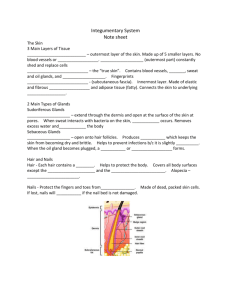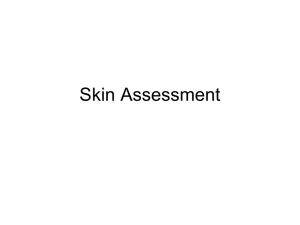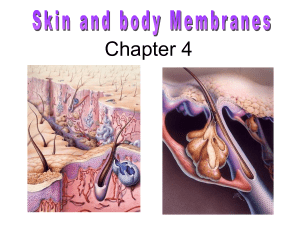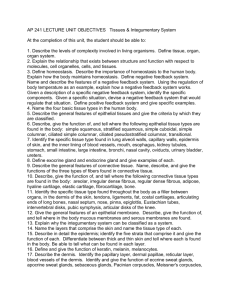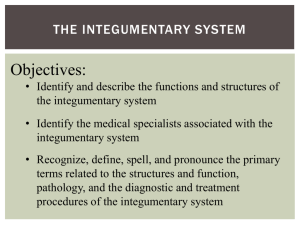Skin Review Guide
advertisement
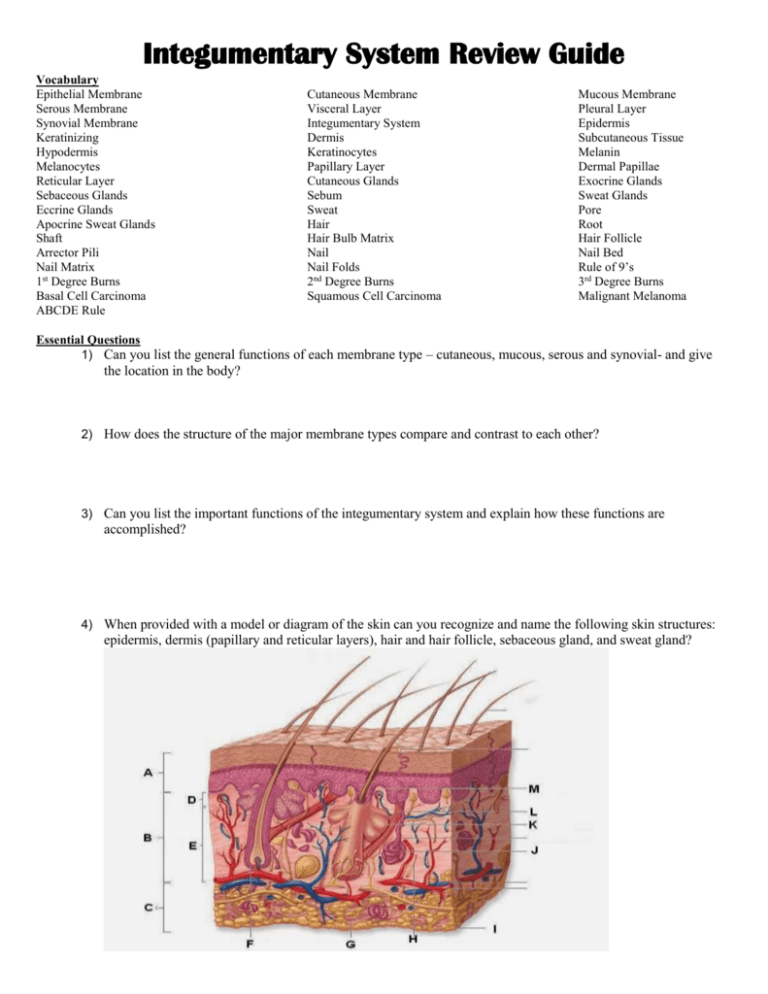
Integumentary System Review Guide Vocabulary Epithelial Membrane Serous Membrane Synovial Membrane Keratinizing Hypodermis Melanocytes Reticular Layer Sebaceous Glands Eccrine Glands Apocrine Sweat Glands Shaft Arrector Pili Nail Matrix 1st Degree Burns Basal Cell Carcinoma ABCDE Rule Cutaneous Membrane Visceral Layer Integumentary System Dermis Keratinocytes Papillary Layer Cutaneous Glands Sebum Sweat Hair Hair Bulb Matrix Nail Nail Folds 2nd Degree Burns Squamous Cell Carcinoma Mucous Membrane Pleural Layer Epidermis Subcutaneous Tissue Melanin Dermal Papillae Exocrine Glands Sweat Glands Pore Root Hair Follicle Nail Bed Rule of 9’s 3rd Degree Burns Malignant Melanoma Essential Questions 1) Can you list the general functions of each membrane type – cutaneous, mucous, serous and synovial- and give the location in the body? 2) How does the structure of the major membrane types compare and contrast to each other? 3) Can you list the important functions of the integumentary system and explain how these functions are accomplished? 4) When provided with a model or diagram of the skin can you recognize and name the following skin structures: epidermis, dermis (papillary and reticular layers), hair and hair follicle, sebaceous gland, and sweat gland? 5) Can you name the layers of the epidermis and describe the characteristics of each? 6) Can you describe the distribution and function of epidermal derivatives such as the sebaceous glands, sweat glands and hair? 7) Can you name the factors that determine skin color and describe the function of melanin? 8) Can you differentiate between 1st, 2nd and 3rd degree burns? 9) How do we explain the “Rule of Nines”? 10) Can you summarize the characteristics of basal cell carcinoma, squamous cell carcinoma and malignant melanoma? Extra Credit Questions Must be turned in before the tests starts Multiple Choice: 1, 2, 3, 4, 6, 7 Short Answer Essay: 1, 3, 4, 6, 7, 8, 9, 10, 11, 12, 13, 14




